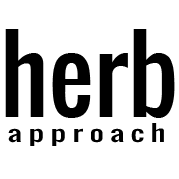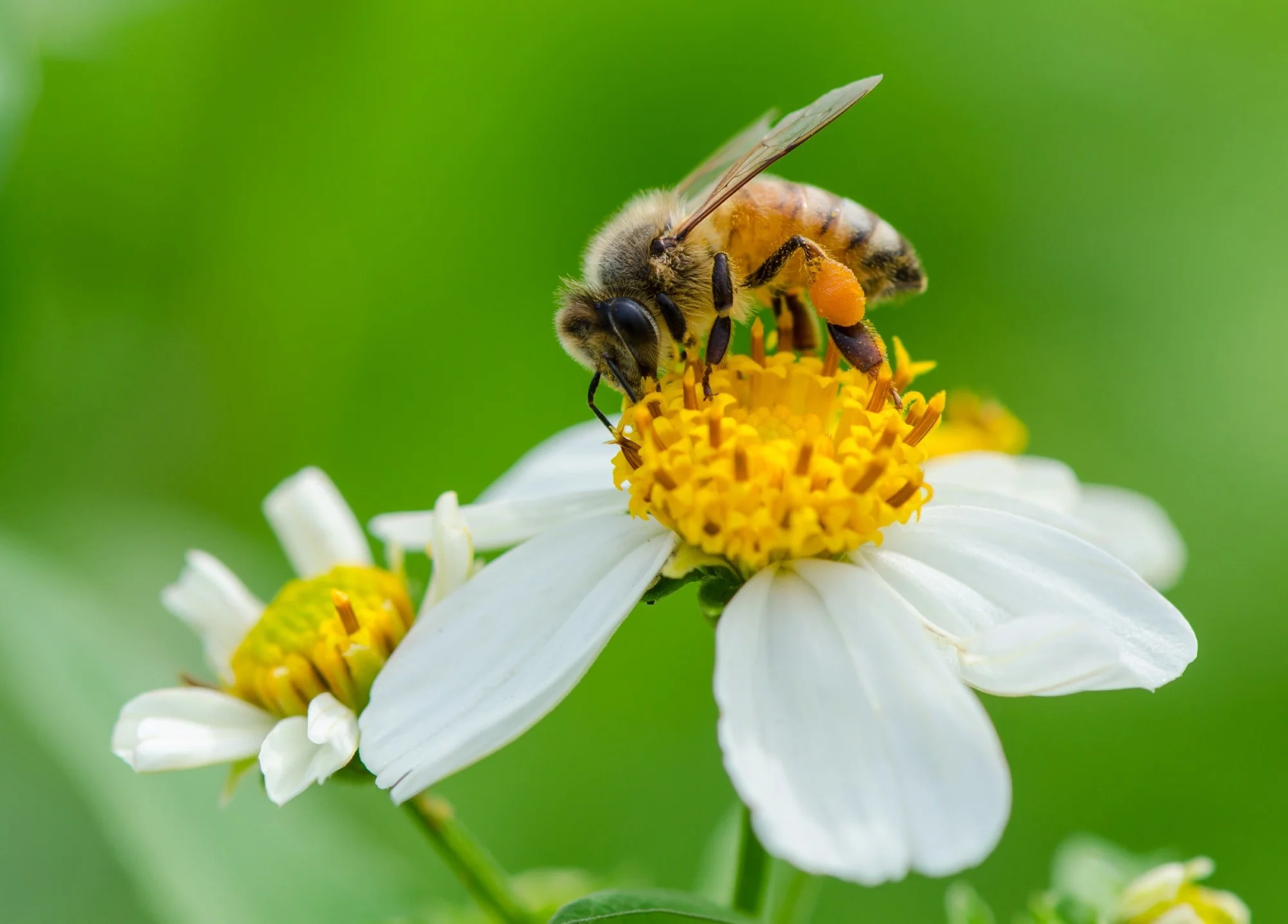Hemp plants have become a topic of interest in relation to their role in providing nutrients to pollinators, particularly bees. Recent studies have shed light on the specific nutrients that hemp pollen offer to bees. As well as, preferred strains of hemp among bees, and the potential ecological value of hemp fields for bee populations. This article aims to explore the findings of these studies and highlight the importance of hemp as a nutritional resource for bees.
Importance of Bees and Hemp’s Role
Bees play a crucial role in pollinating flowering plants, including approximately 35% of the world’s food crops. Without bees and other pollinators, agricultural production would be severely impacted. Hemp, a versatile plant with various industrial applications, has emerged as a potential source of nutrients for bees. Studies show that bees are attracted to hemp fields, especially during periods when few other plants are in bloom. Despite hemp plants not producing nectar and relying on wind for pollen dispersion.
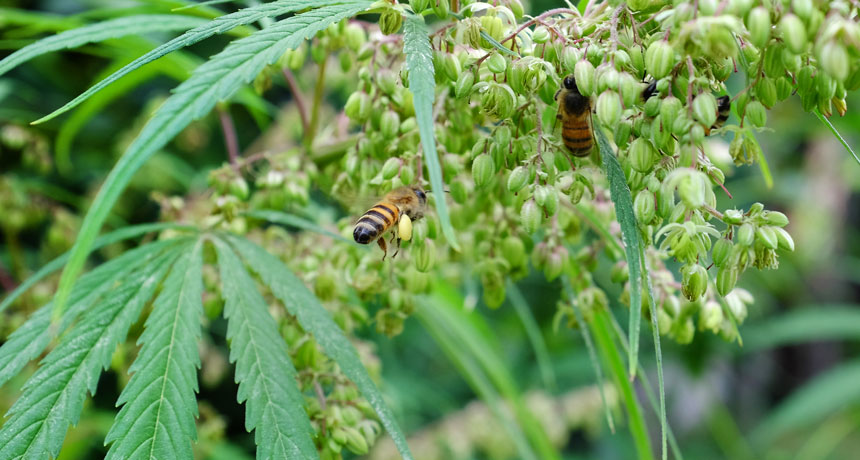
Study on Bee Preference and Nutrient Composition of Hemp Pollen
A study published in the peer-reviewed journal Insects examined the chemical composition of pollen from four different industrial hemp varieties: Canda, CFX-2, Henola, and Joey. The researchers also observed the abundance and diversity of bees foraging on these hemp varieties. The study aimed to investigate the nutritional benefits of hemp pollen for bees and provide insights into which hemp strains are preferred by bees.
The researchers collected and analyzed pollen samples from the four hemp varieties. As well as, they subsequently sent the samples to a commercial analytical laboratory for testing. The laboratory analyzed the samples for moisture levels, crude fiber, protein content, ash content, mineral content, amino acids, and fatty acids.The researchers found that each hemp strain provided different ratios of nutrients.
Bee Preference for Hemp Varieties
Despite variations in nutrient composition, the study found that Joey, a hemp variety developed in 2020. This was the most preferred by bees. Joey’s lower protein, amino acid, and saturated and monounsaturated fatty acid content compared to the other hemp varieties still led to this preference being observed. The researchers note that bees have a preference for Joey. Suggesting that it may offer other desirable characteristics such as taste or scent.
The study identified three main groups of bees foraging on the hemp varieties: honey bees, bumble bees, and sweat bees. Sweat bees, attracted to perspiration, were found to be the most abundant among the bee community on all four hemp varieties. This finding contradicted previous studies that had listed honey bees as the most prevalent pollinators.
Nutritional Benefits of Hemp Pollen for Bees
The analysis of hemp pollen samples revealed the nutritional benefits that hemp provides to bee populations. Hemp pollen was found to contain essential nutrients such as proteins, amino acids, and fatty acids that contribute to bee nutrition. However, it is important to note that bees require a diverse range of pollen sources for sustained survival. While hemp pollen can provide some nutritional benefits, multiple pollen sources are necessary to support bee populations effectively.
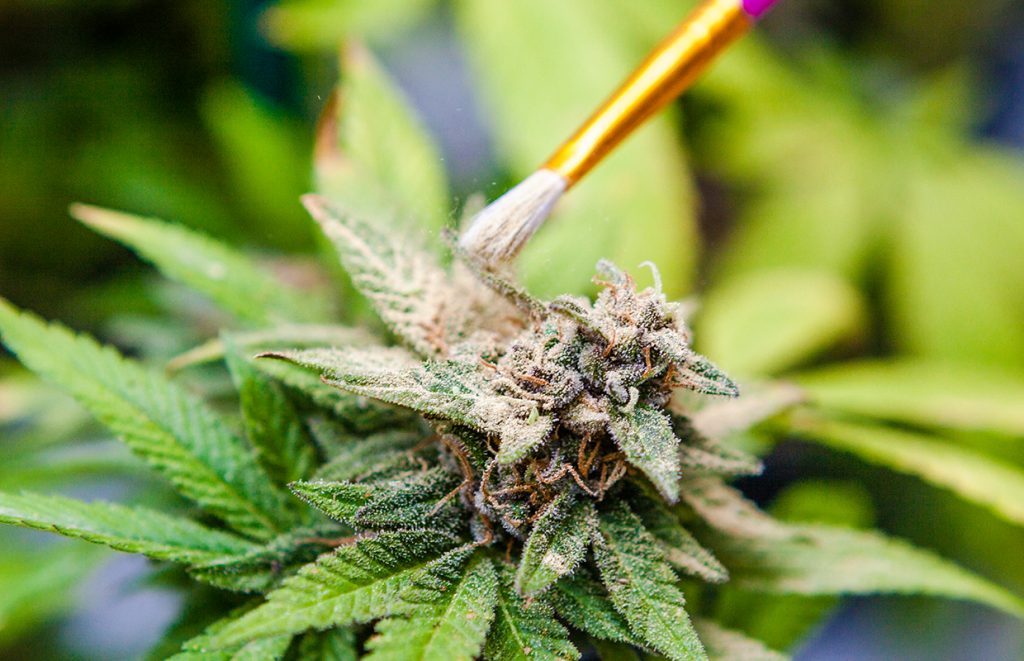
Other Bee Species and Hemp Pollen
In addition to honey bees, bumble bees, and sweat bees, researchers have also observed other bee species gathering pollen from hemp plants. The longhorn bee, miner bee, and leafcutter bee have all documented their presence as visitors to hemp fields. These findings highlight the potential ecological value of hemp as a resource for various bee species.
Hemp Legislation and Bee-Friendly Farming Practices
The potential legalization and increased commercial production of hemp could have significant implications for bee populations. Senate majority leader Mitch McConnell proposed the Hemp Farming Act in 2018. Thus, this could remove hemp from the list of controlled substances and legalize its sale. If this legislation is enacted, it would create more opportunities for bee-friendly farming practices. As well as, the cultivation of hemp as a valuable nutritional resource for bees.
Beekeepers and farmers have an important role to play in ensuring the well-being of bee populations in hemp fields. By selecting pest-repelling techniques that do not hinder bees’ access to hemp plants, farmers can create an environment that is conducive to bee foraging and nutrition. Preserving and supporting bee populations, especially during times when their survival, requires implementing bee-friendly farming practices.
Exploring the Relationship Between Bees and Cannabis
The relationship between bees and cannabis plants has been a subject of interest for researchers. Beyond hemp, there are ongoing projects exploring the interaction between bees and cannabis plants that produce higher levels of THC and CBD. French beekeeper Nicolas Trainerbees has experimented with bees and higher THC cannabis varieties, resulting in the production of “cannahoney.” Israeli company PhytoPharma has developed Pure Bee cannabis honey. Which contains high levels of CBD and THC and is marketed for medicinal purposes.
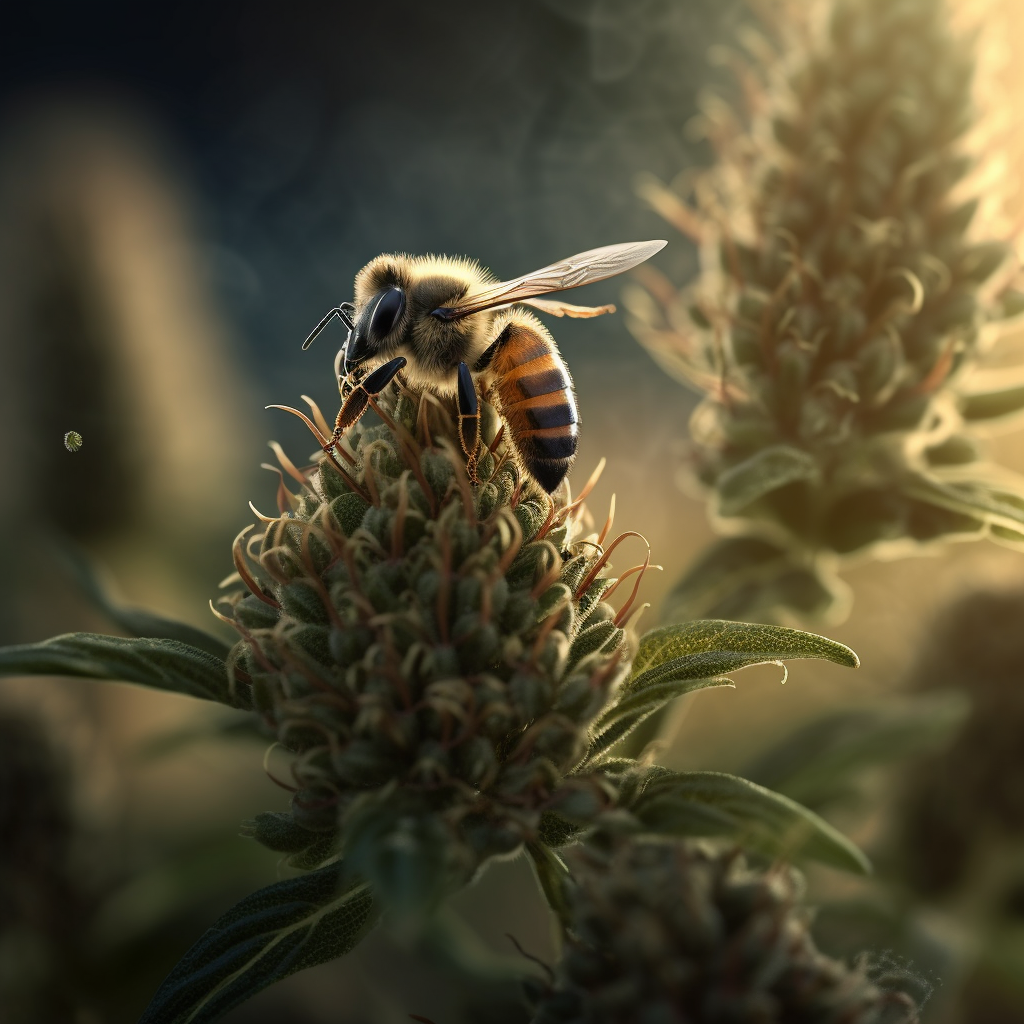
Conclusion
The studies on the nutritional benefits of hemp pollen for bees provide valuable insights into the role of hemp as a resource for bee populations. Hemp plants, despite not producing nectar, attract bees and offer essential nutrients that contribute to bee nutrition. The preference of bees for specific hemp varieties, such as Joey. Thus, this highlights the importance of understanding the diverse needs of bee populations and the significance of multiple pollen sources for their survival.
As discussions around hemp legislation continue, it is essential to consider the potential impact on bee populations and promote bee-friendly farming practices in hemp fields. In conclusion, by recognizing the ecological value of hemp and its role in supporting diverse bee species. We can contribute to the conservation of bees and ensure the sustainability of agricultural ecosystems.
